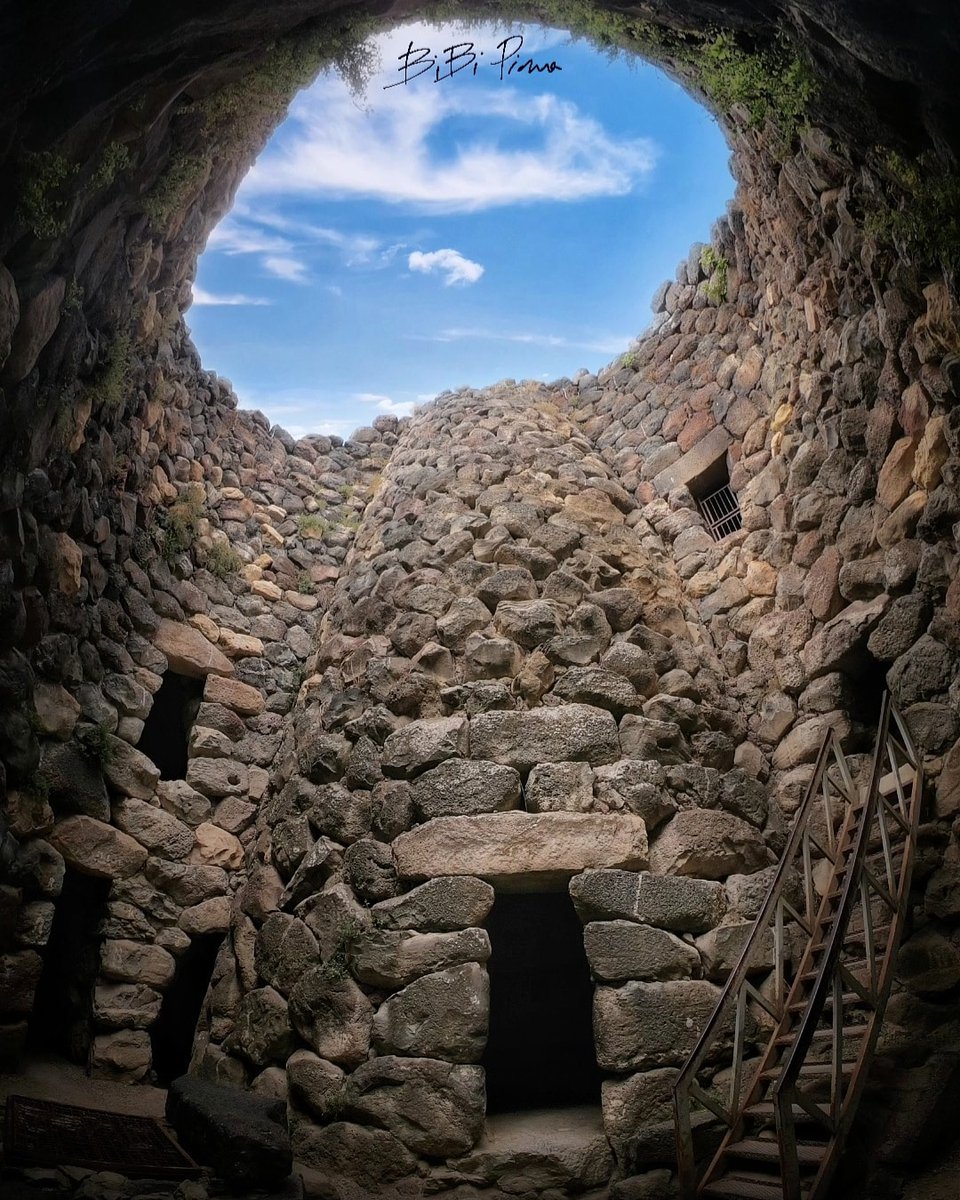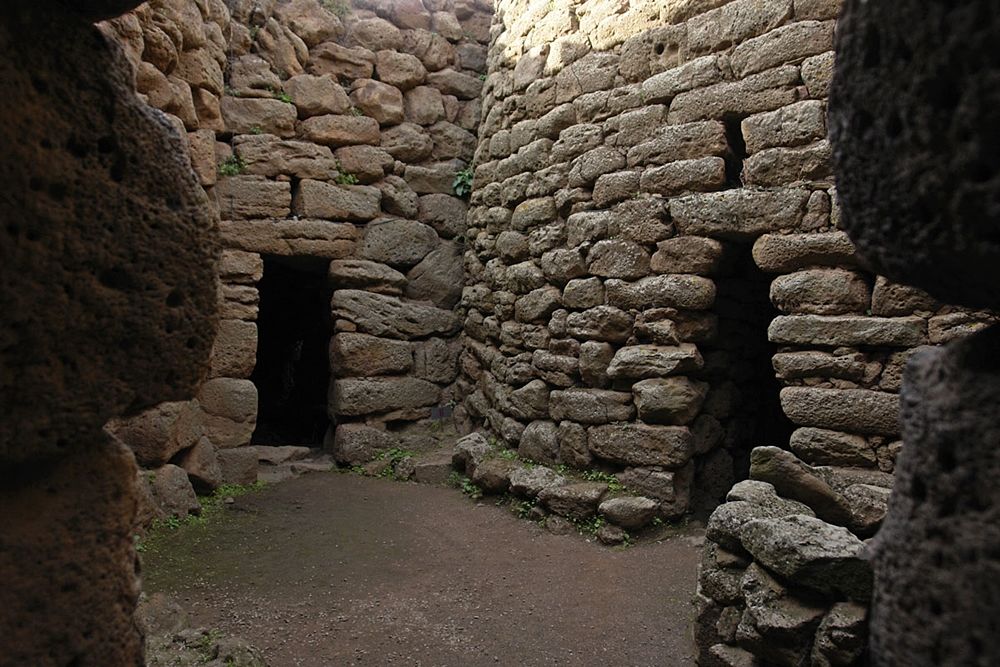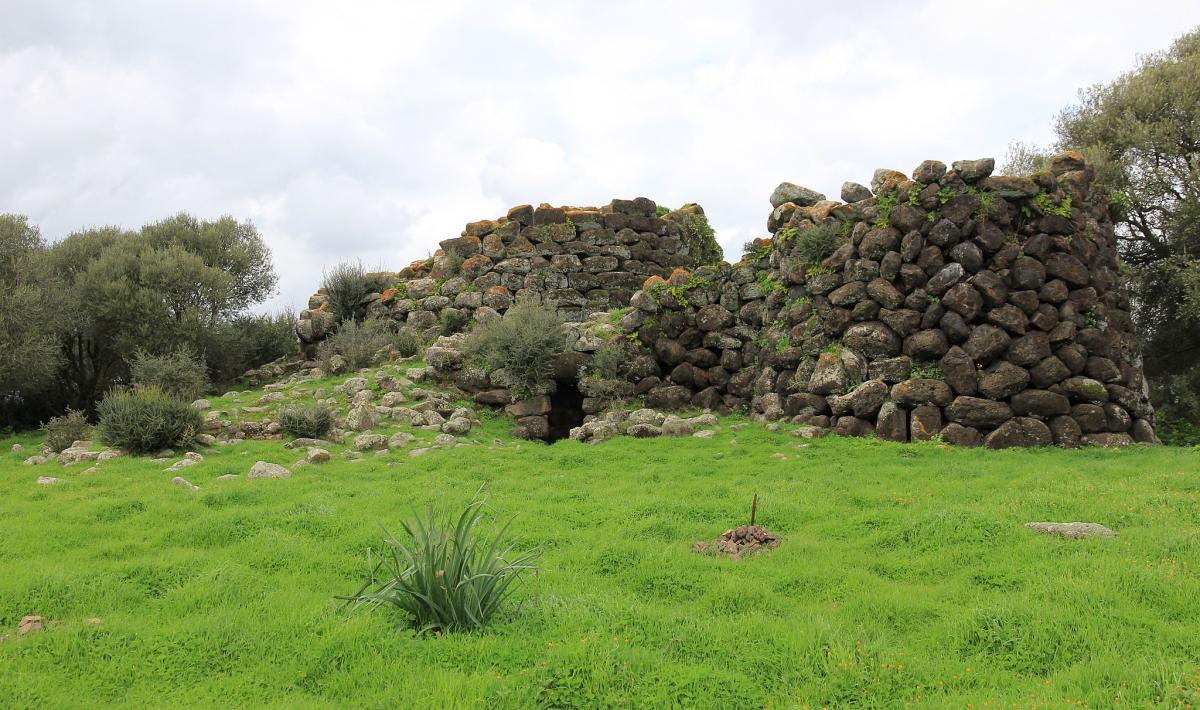**NURAGIC SARDINIA – part 2: Nuraghes**
Second thread in the Nuragic Sardinia series, following the peculiar Sardinian constructions of nuraghes.
📸 Reconstruction
Second thread in the Nuragic Sardinia series, following the peculiar Sardinian constructions of nuraghes.
📸 Reconstruction

Nuraghes belong to the category of megalithic constructions of the Mediterranean, with some resemblance to buildings in the Balearic Islands and in Malta, but still these sites are all different from each other.
Nuraghes are like primordial castles, structures that could be-

Nuraghes are like primordial castles, structures that could be-


-as tall as 30 metres (nuraghe Arrubiu, when intact). There's no agreement on the origin of the name (that's because there's no agreement on "paleo-Sardinian" language), but one hypothesis sees in "nur" a paleo-Sardinian word for rock, as it's often found in toponyms.
📸Arrubiu
📸Arrubiu

Nuraghe would then mean "bunch of rocks". This also leads to notice that calling those civilisations "Nuragic" might not be completely appropriate, since that's just the name of a kind of construction. They would just be Ancient Sardinians.
But what was their function? That's-

But what was their function? That's-


-still largely debated. It was probably not the same thing throughout history. Some older nuraghes appears surrounded by smaller constructions and huts; these have been associated to the "royal palaces" of the time, the house of the king or tribal chief who showed their - 





-importance with a much bigger house than others. Everyday life's objects have been found inside.
Another kind is the simplest nuraghe, towers built in hard terrains, high mountains, cliffs, near the sea or overlooking a valley. These were alone and probably acted as watchtowers

Another kind is the simplest nuraghe, towers built in hard terrains, high mountains, cliffs, near the sea or overlooking a valley. These were alone and probably acted as watchtowers


The last hypothesis is that of the re-use of old nuraghes as temples or sacred places. Inside some of them we found votive statuettes and a few burials. It is thought the most important nuraghes have been turned into temples in the last centuries of the Nuragic Age, when- 

-nuraghes weren't built anymore.
How do we know how they looked like, since most of them are in ruins now? Among the statuettes, we found small reproduction of nuraghes. We found them in nuraghes but also in the necropolis of Mont'e Prama. These statues tell us exactly how-


How do we know how they looked like, since most of them are in ruins now? Among the statuettes, we found small reproduction of nuraghes. We found them in nuraghes but also in the necropolis of Mont'e Prama. These statues tell us exactly how-



-they looked like.
There are several kinds of nuraghes but we can speak of a truncated cone shape, with two or more levels inside joined by an internal stairway. The ceiling of each room terminated in an elongated dome shape and the last one could be closed with branches.


There are several kinds of nuraghes but we can speak of a truncated cone shape, with two or more levels inside joined by an internal stairway. The ceiling of each room terminated in an elongated dome shape and the last one could be closed with branches.



Inside nuraghes there were also silos to stock goods.
Some nuraghes had a terrace on top and around it run a balcony with wooden external supports. We found them on the ground around the nuraghe of Barumini.
📸Is Paras, Isili


Some nuraghes had a terrace on top and around it run a balcony with wooden external supports. We found them on the ground around the nuraghe of Barumini.
📸Is Paras, Isili



But nuraghes evolved during history. The first examples are called "proto-nuraghes" because they're different from all the others. They develop horizontally along a corridor.
The simplest nuraghes are the single-tower, or tholos type.
📸Albucciu, proto-nuraghe x2. Single tower


The simplest nuraghes are the single-tower, or tholos type.
📸Albucciu, proto-nuraghe x2. Single tower



The name derives from the technique of using ever smaller stones to close the ceiling, since all these constructions are made in drywall, with bigger stones at the base and smaller ones to fill the holes.
We have then the nuraghes "tancato", made up of two towers of-

We have then the nuraghes "tancato", made up of two towers of-


-different size and joined by enclosing walls.
The final evolution is the addition of more towers, enclosing walls and defence structures. They're the rarest and more complex, the tallest buildings of Bronze Age Mediterranean-
📸Santa Barbara, Villanova Truschedu, tancato
The final evolution is the addition of more towers, enclosing walls and defence structures. They're the rarest and more complex, the tallest buildings of Bronze Age Mediterranean-
📸Santa Barbara, Villanova Truschedu, tancato

-after the pyramids. Nuraghe Arrubiu in Orroli is an example.
Later on, around these polilobate nuraghes, villages were built, as it happened around su Nuraxi of Barumini.
📸 Polilobate, Nuragic village

Later on, around these polilobate nuraghes, villages were built, as it happened around su Nuraxi of Barumini.
📸 Polilobate, Nuragic village


📸Nuraghe Losa, Abbasanta. It presents astronomical alignments with solstices and equinoxes. Trilobate. 





📸 Santu Antine, Torralba. One of the biggest and important of the existing ones. Trilobate with central tower that could reach 25 metres. 





📸Arrubiu, Orroli. One of the largest existing ones, its name means "the red one". Polilobate with village. 





📸Su Nuraxi, Barumini, polilobate with village. I made an entire thread about it ⬇️
https://twitter.com/DrWatson_writer/status/1440656886508900363?s=19
📸Santa Sabina, Silanus, single tower. The nuraghe next to the Byzantine church of Santa Sabina. The holiness of the nuraghes was still recognised in Middle Age, as many churches were built beside or over nuraghes and sacred wells. 

There are around 7000-8000 nuraghes to this day, but many may be still hidden under millennia of mud and rocks, meaning the number is much higher than that. Some even say 10.000.
They resist millennia, even devastating fires.
📸Abbauddi, Scano Montiferro, after the fire of July
They resist millennia, even devastating fires.
📸Abbauddi, Scano Montiferro, after the fire of July

• • •
Missing some Tweet in this thread? You can try to
force a refresh














